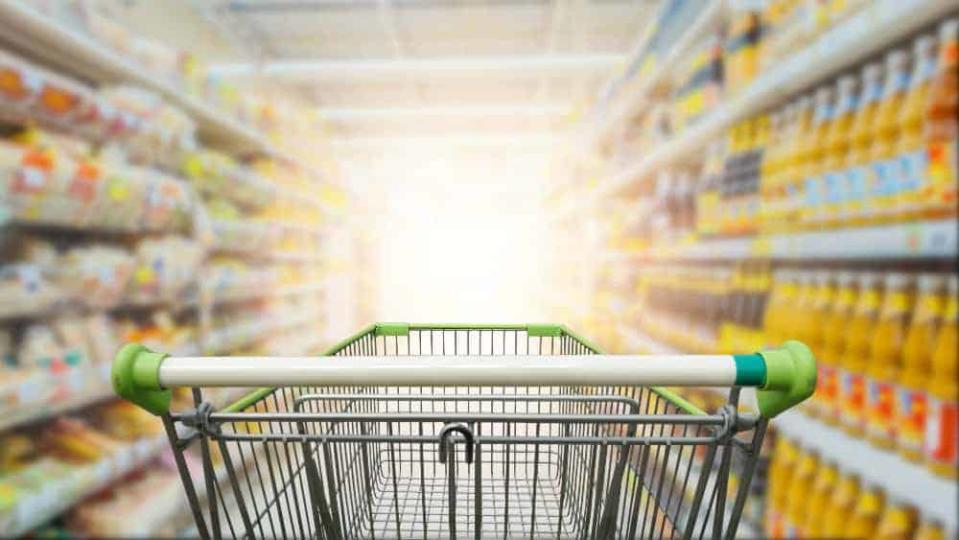2 Consumer Staple Stocks to Buy in October

Grocery stores are always a great investment option for a core part of your portfolio, but even more so in times of uncertainty. When investors need to add defence to their portfolios, grocery stocks are usually the first consumer staple investors will buy.
This is evidenced by the mass share appreciation the last 12 months as well as the negative beta that most companies have in the industry.
The ability to grow in good economic times but remain defensive in times of poor economic activity makes these companies the top stocks to hold until retirement.
The industry isn’t without its risks though. One of the top risks to the grocery industry is the increasing competition companies are facing, especially from super-healthy stores, though due to the more expensive nature of those stores, they don’t fully compete, especially in consumer defensive goods.
Nonetheless, investors should still own some grocery stocks to provide your portfolio with stability, and the top two companies in Canada are Loblaw Companies (TSX:L) and Metro (TSX:MRU).
Loblaw
Loblaw is the largest grocer in Canada, which always offers an advantage. Since its reach is huge, Loblaw enjoys the ability to have increased brand recognition of its many store brands, and it is great for the company’s scale.
Its brands play a major part in attracting different customers from different demographics.
In addition to store brands, it also has some of the top private label food brands such as President’s Choice and No Name.
It has diversified its businesses extremely well over the years, offering customers banking services, credit cards, and insurance services that it helps drive through its loyalty program.
Its loyalty card has been a huge addition that should continue to drive sales growth and shoppers at multiple stores collecting the same points. Loyalty programs have been a huge trend in recent years, and Loblaw has always been at the forefront.
Its Shoppers Drug Mart acquisition has also been huge for the company the last few years, helping to capture more customers for its loyalty program and differentiating the products it’s serving its customers.
It’s been improving its earnings before interest, taxes, depreciation, and amortization (EBITDA) margin numbers the last five years. It’s also managed to keep its inventory turnover numbers flat.
Its EBITDA for the year is estimated to be nearly $5 billion, and with net debt around $12.6 billion, it gives Loblaw a net debt to EBITDA ratio of roughly 2.5 times, very manageable.
Loblaw also pays a dividend of $1.26 annually for a yield of about 1.7%.
Metro
Metro isn’t quite the size of Loblaw, but it’s still a massive company. It operates in Ontario, Quebec, and Eastern Canada.
Metro, like Loblaw, has a number of brands it operates, which helps it to capture a wider range of consumers.
It’s been focused on increasing its margins by eliminating inefficient operations such as some 24-hour stores, in addition to installing more self-checkout lanes at many of its stores.
Metro also recently acquired a drug store in Quebec, Jean Coutu. The acquisition is expected to deliver promising synergies as well as helping to drive more customers across all its brands.
It has been improving its EBITDA margin, as well as slightly improving its turnover ratios, showing that companies efforts to optimize the business have been paying off.
It has net debt of nearly $2.4 billion and is estimated to do roughly $1.35 billion in EBITDA for 2019, giving it a net-debt-to-EBITDA ratio around 1.8 times. In addition, Metro pays a dividend that yields roughly 1.4%.
Bottom line
You can’t go wrong with either stock, and the prudent move would be to buy both and diversify in order to reduce your risk.
What’s important, though, if you are going to make an investment, is to do it as soon as possible, as more investors are rushing to these consumer staples for defence and pushing up valuations in the process.
More reading
Hate Taxes? Then Do This 1 Awesome Trick With Your TFSA and RRSP
TFSA Investors: Lock In This $509/Month Passive-Income Stream Today
The Stock Market Is at a Record High: Is it Time to Get out?
These Jaw-Dropping Facts Will Change Your Mind About the Internet of Things
Fool contributor Daniel Da Costa has no position in any of the stocks mentioned.
The Motley Fool’s purpose is to help the world invest, better. Click here now for your free subscription to Take Stock, The Motley Fool Canada’s free investing newsletter. Packed with stock ideas and investing advice, it is essential reading for anyone looking to build and grow their wealth in the years ahead. Motley Fool Canada 2019

 Yahoo Finance
Yahoo Finance 